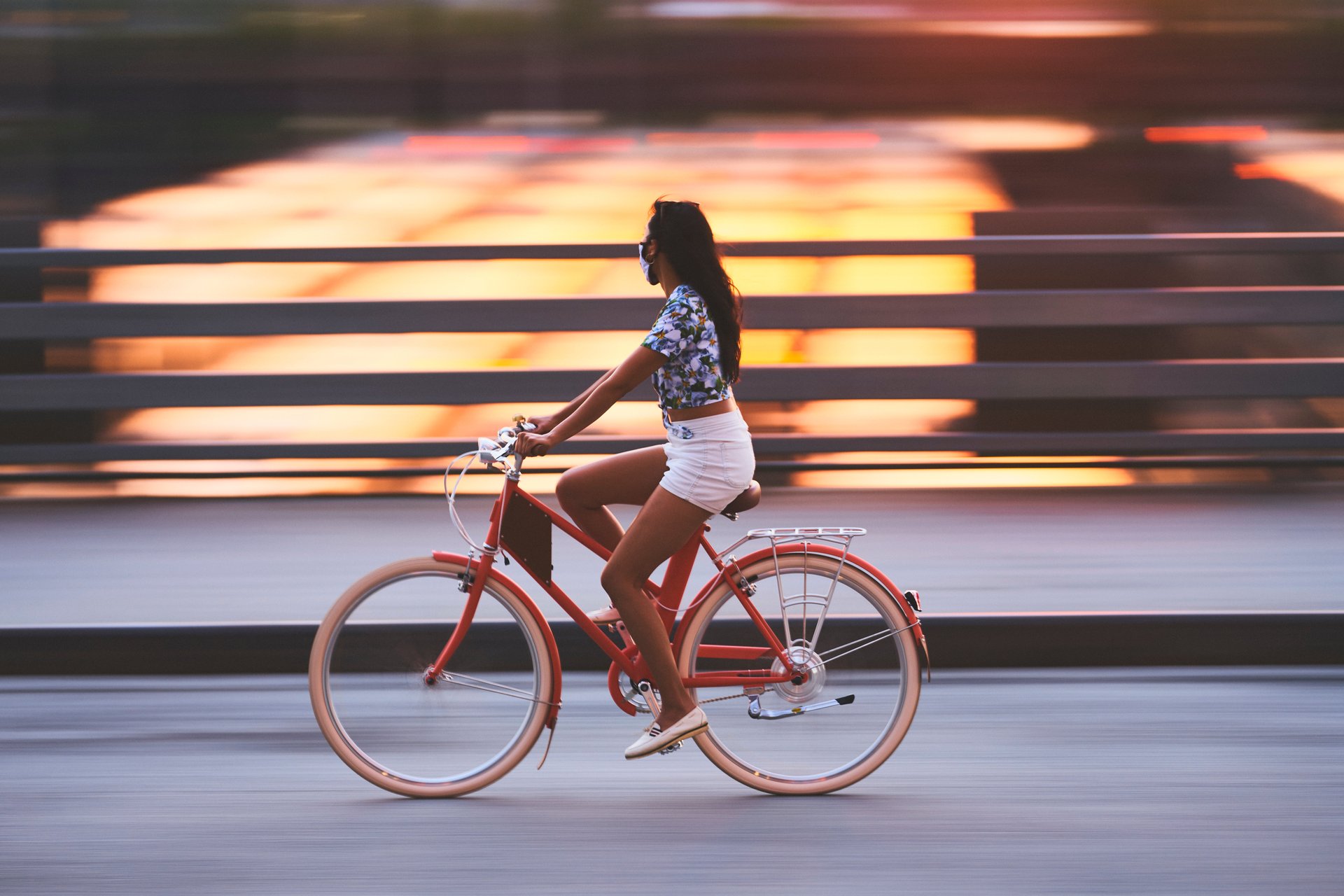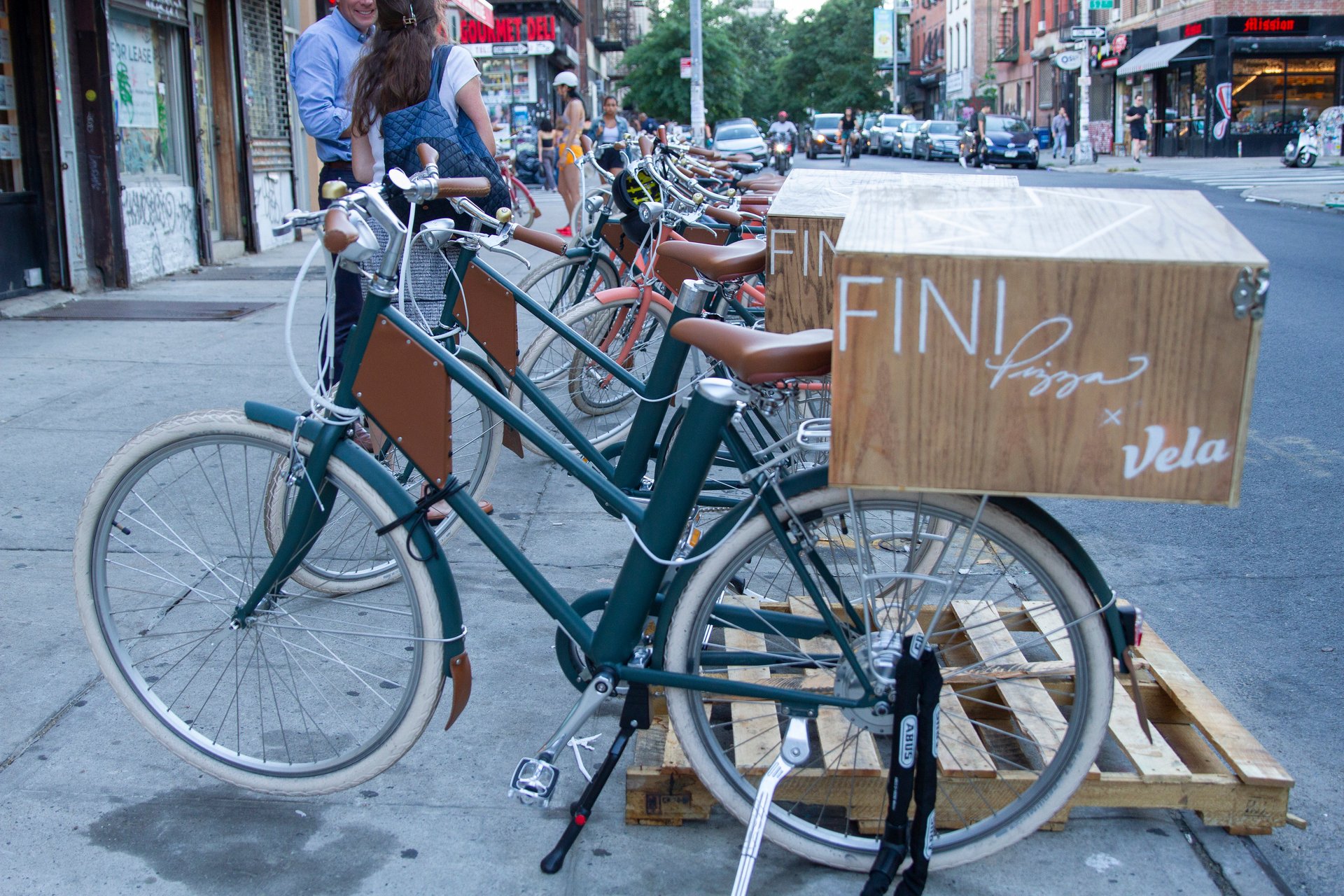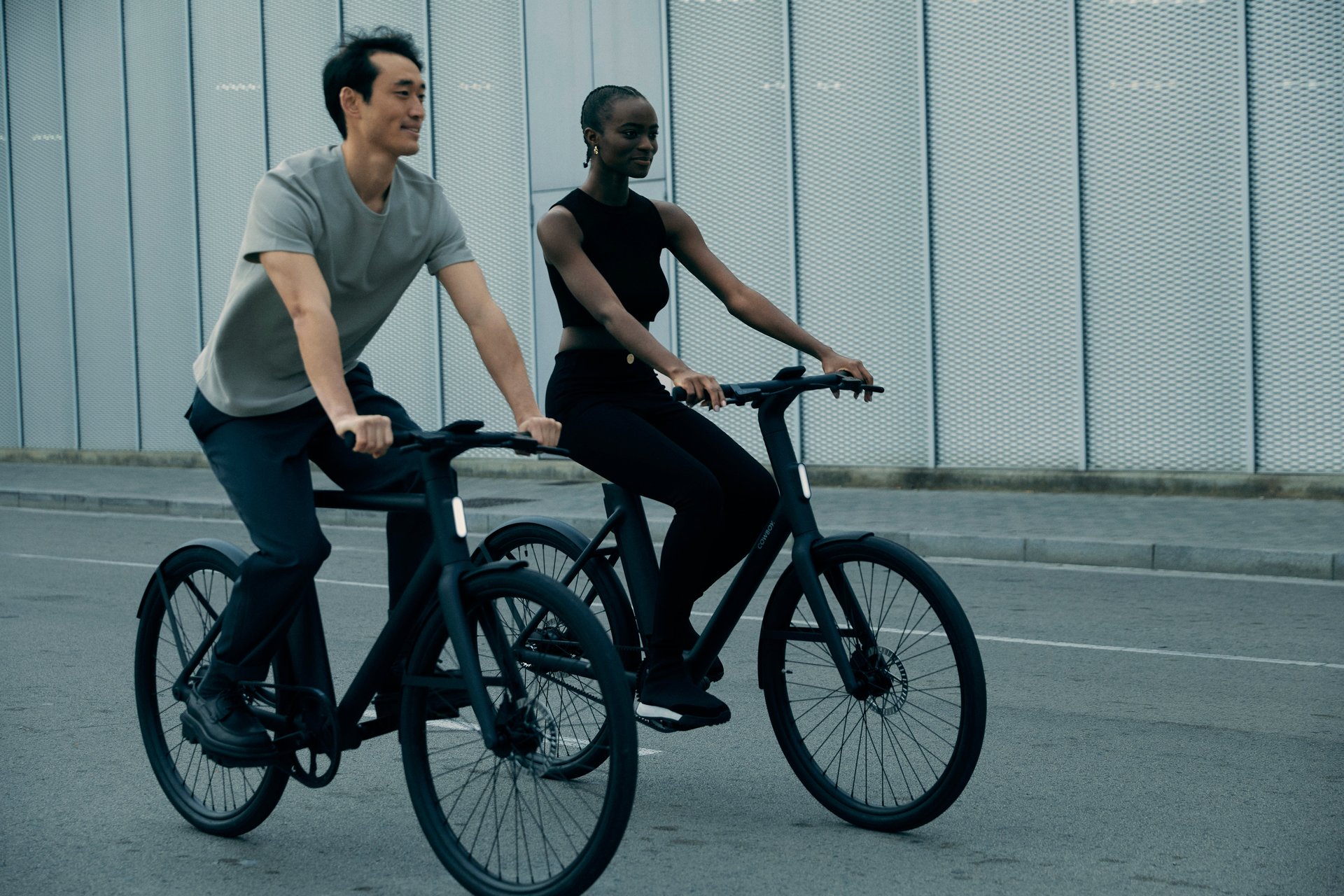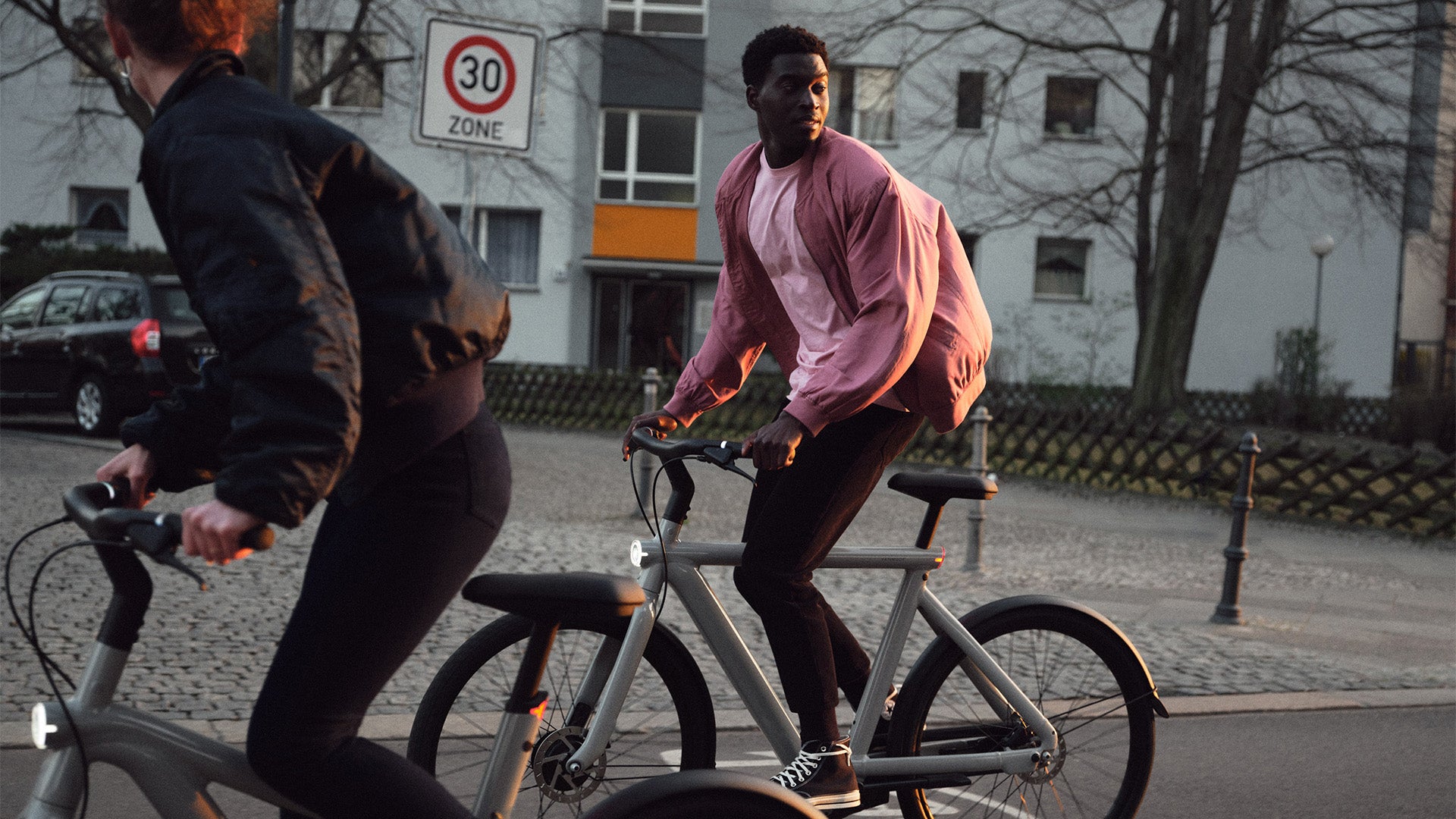E-bikes are about to become an urban status symbol
E-bikes are about to become an urban status symbol, marrying style and speed

When Sean Feeney, a New York restaurateur, opened his new pizza joint Fini last month in Williamsburg, Brooklyn, he knew he wanted to offer delivery. But instead of outsourcing it to the usual third-party platforms like DoorDash or UberEats, he opted to keep it in-house and instead bought a series of Vela e-bikes for his delivery workers.
Macgyvered bikes with a strapped-on battery didn’t really mesh with the branding of his pizzeria. But Vela’s classic cruiser styling felt like it didn’t sacrifice style for speed, he said.
At first glance, it’s hard to even tell that the bikes are electric. They’re from a Brazilian startup that has hidden the battery within the frame and they come with leather seats and other fine-touch finishes. Feeney also added a custom-built pizza box on the back to keep the pies warm while his employees ride at up to 20 mph to get pizzas to customers.
Although e-bikes in the US were quickly adopted by delivery workers, they’ve still evaded true mainstream uptake. Partially that’s due to a lack of good bike infrastructure, which plays into safety concerns, but also aesthetic unease. The look of e-bikes have been criticized as a “monstrosity” and even “embarrassing.”
But a wave of high end e-bike companies are ramping up in the American market offering bikes between $1500 to $4000 to appeal to a more style-minded segment of riders, and shake the image of them as a delivery vehicle.
“It makes it a lot easier to get around,” said Feeney, who also likes to e-bike to his two other restaurants, Lilia and Misi, in the neighborhood. “I think it’s an amazing thing for our city, it gives new life to it.”

Changing perceptions of e-bikes
In Tanguy Goretti’s experience the e-bike market can shift quickly. The co-founder of Cowboy, which offers models for $2,000 to $3,000, said that in Europe e-bikes had to overcome the stigma of being seen as something for older people.
“In 2015, most of the customers buying an e-bike in Europe—more than 50% of them were about 50 years old,” said Goretti. “It wasn’t cool, it was seen as cheating, but it completely changed in just five years. Now most of the customers are between 25 to 40 years old and they live in big cities.”
Paris had been a very small market for Cowboy until mayor Anne Hidalgo campaigned to make the entire city bikeable by 2026, investing nearly $300 million into infrastructure. In two years, the city transformed into Cowboy’s biggest market.

The Light Electric Vehicle Association estimates that the US imported approximately 790,000 e-bikes in 2021, a huge jump from the nearly 450,000 e-bikes imported the year before, and roughly 250,000 imported in 2019. In 2020, e-bike sales in the US outpaced the sale of conventional two-wheelers.
“If you look at the numbers, it’s quite impressive because the US market in 2020 was smaller than Belgium and Netherlands combined and they are really small countries but the US is growing super quickly,” said Goretti.
Brands like Vela, Cowboy, and VanMoof have created a high end market for expensive e-bikes, and imported it to the US, but there are mid-tier options as well, such as Radpower, a Seattle brand, which is a major e-bikes player. But with models starting at $900, the brand is less design-led and lacks some of the power and smart features that pricier options provide.
The pandemic helped boost e-bike ridership
Covid-19 has played a big part in bringing about a shift in the e-bikes conversation. Reluctant to take public transportation, people began experimenting with e-bikes more in the last two years. A desire for sustainability also factors in, but in congested cities, bikes often have an advantage as the fastest way to get around, as well as the safest, from a covid mindset.
“We’re six to seven years behind Europe in adopting e-bikes,” said Justin Kosmides, co-founder of Vela. Kosmides’ bet is that by providing a more attractive and premium experience people will start relying on their bikes for daily commuting rather than for occasional recreation.
Cowboy, which is based in Belgium, started selling e-bikes in the US this year and although it has yet to gather a large set of US data, among their European customers the e-bike usually replaces a second car. The average Cowboy rider uses the bike more than eight times a week, riding a distance of slightly more than three miles per trip.

E-bike infrastructure, and funding, is on its way
American cities are remarkably well suited for e-bikes, according to e-bike entrepreneurs.
“US cities, they’re generally a bit larger,” said Taco Carlier, a Dutch entrepreneur who with his brother Ties Carlier started the minimalist e-bike brand VanMoof, where models sell for around $3,000. “In most cities, it’s a bit warmer in summer compared to European cities and a lot of most cities also have hills in the US.”
“On top of that, American cities do have much more space,” Carlier said. “There’s much more space on the road to create things like bike lanes in the future and some more traditional European cities for instance, it’s really compact in Amsterdam, we have the canals so it’s much harder to squeeze all the traffic—cars, pedestrians, and bike traffic—into the city.”
Having the right infrastructure is a big piece of the shift to e-bikes, but the brands in the space feel confident it will get there.
There’s been the creation of slow streets in San Francisco to make roads friendlier to all kinds of non-car traffic, and in New York, a planned congestion charge for cars to access much of Manhattan as soon as late next year are also likely to drive adoption.
There’s also a groundswell of corporate and government interest in e-biking. Some large companies are encouraging the trend, including Amazon, which provides bike subsidies to its corporate employees, and Google, which lends out e-bikes for free.
Meanwhile, California has earmarked $10 million as incentives for e-bikes, set to launch before the end of the year, while five other states—Colorado, Connecticut, Hawaii, Massachusetts, and Vermont—are passing or renewing e-bike incentive programs. In 2021 the proposal of the E-BIKE Act, which would offer Americans a refundable tax credit worth 30% of a new e-bike’s purchase price, capped at $1,500, was introduced in the US House of Representatives.